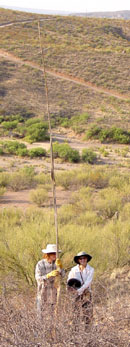Saguaro Fruit Harvest
June 29 - July 1, 2002
Armed with David Omick and Pearl Mast's recommendations, a group of Saguaro-Juniper Associates and friends set forth into the hills to capture Saguaro fruits. That's Kevin Henderson and Anne Helwig at left, armed with the O'odham huipaD, the instrument used to dislodge the fruits from high up. This very long series of lashed-together saguaro ribs has a crosspiece near the top to aid in loosening them. (Click on the image to enlarge it.)
Below, two views of the ripe fruit as seen from the ground. (Click on each image to enlarge it.) Note in the right-hand image that, while the crimson calyx of the fruit is visually most striking, the main body of the fruit is the much darker "ball"shaped mass further inside, the central cluster containing the seeds and most of the sweetness. These two open fruits will require dislodging from the plant, as will the as-yet-unopened but ripe fruits in the left-hand image.
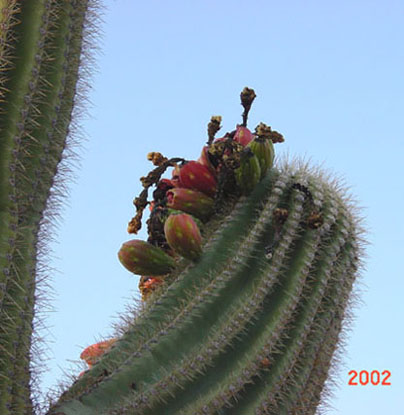
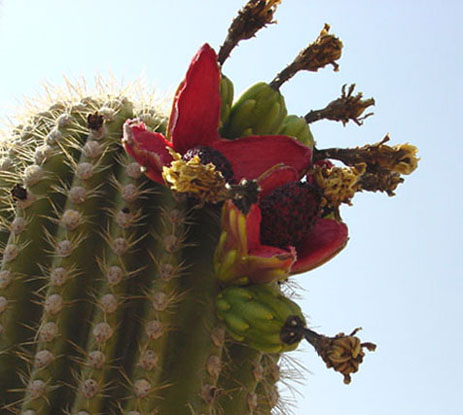
Below left, David Omick checks out an array of ripened, open fruit that has already fallen to the ground. Note in the image at right that even in the fallen fruit shells, some main fruit body remains stuck to the calyx. In a typical year we would ignore such fruit because it often contains tiny rocks from the fall, and insects quickly swarm over the droppings. However, this year (spring 2002) has been so dry that almost no insects or other animals have contaminated the fallen ones, so when we find fairly fresh and obviously clean fruits on the ground or in bushes below the saguaro, we may take them into the pot. It's a judgment call -- in four hours work, we saw only two fruits with larvae of some kind in them. (Click on each image to enlarge it.)
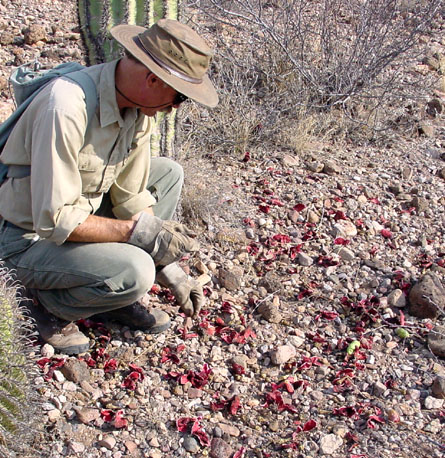 .
.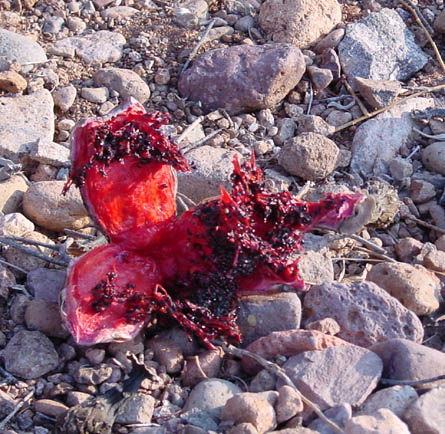
Below, Kevin uses the huipaD tool to dislodge individual fruit, while Anne holds a makeshift net to catch them as they fall.
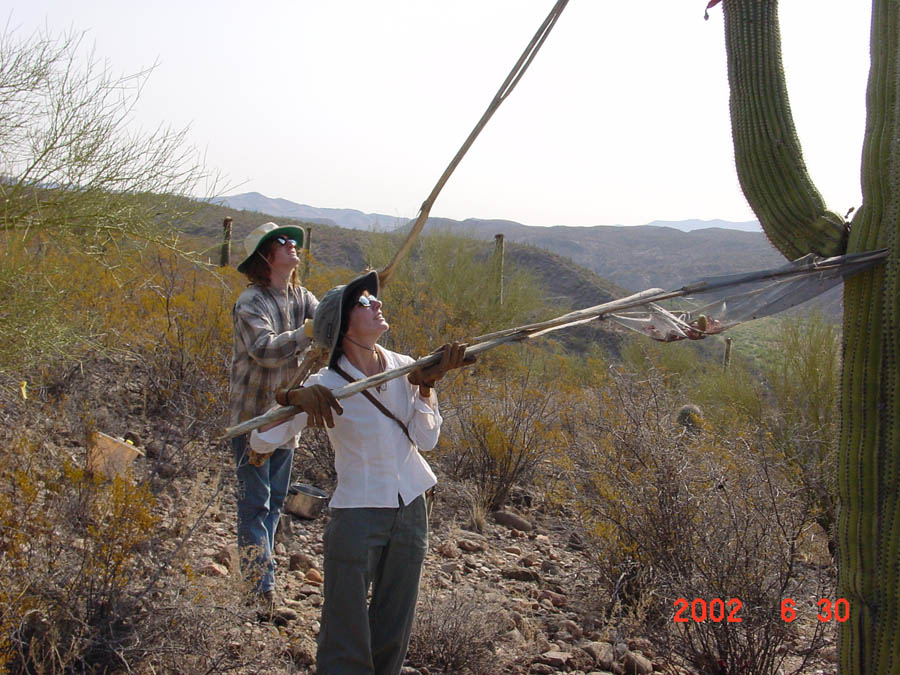
Below, Left Center: to dislodge the fruits on high, David uses his high-tech device -- a very long iron pole which is curved at the end. Several of us used this device as well, but found it too arm-wearying, and preferred the traditional shape, the O'odham kuipaD made of linked Saguaro ribs with a short rib cross-piece, here wielded by Kevin Henderson (below right-center). Anne Helwig holds the screen device devised by David and Pearl for catching the fruits as they fall, and below-right Dick & kevin catching a load of fruit:
We then set the screen-load near the ground, and begin cutting open the ripe fruits and removing the core from the calyx with a spoon, dropping the core directly into the bucket. Below left, a "perfect fruit"; left-center, a cut open fruit; right-center, spoon-work; right, cooking pulp. (Click on each image to enlarge it.)
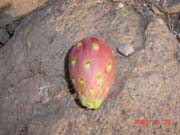 ..
..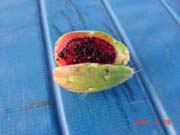 ..
..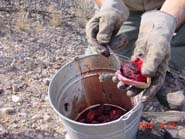 ..
..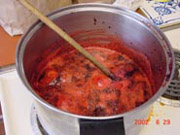
We boil the pulp for maybe 20 full-bubbling minutes, mashing the pulp with a potato-masher or multi-slotted spoon until the pulp is even in consistency and as non-lumpy as feasible, and then freeze it in a plastic jar (left, below) or preserve it in mason jars (if the latter, the mix should be "canned" immediately). Another option is cookies: Daniel Baker spread part of his cooked harvest out onto cookie sheets and set them in the sun to dry (center two photos, and far right).
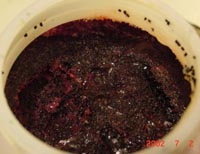
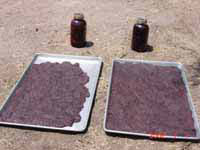
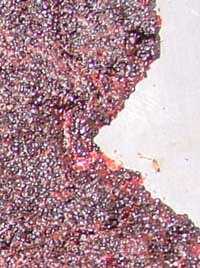 ..
..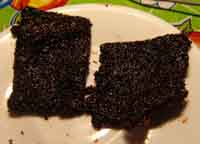
You can get a sense of the size of the black seeds scattered on the inner edge of the freezer jar at left. The taste of this natural sorbet is very difficult to describe, it's "indescribably delicious", the seeds crunching like poppy seeds in cake, and the pulp very rich in a unique sweet flavor. Daniel Baker's drying pulp (second from left) looked almost black while drying out in the mid-day sun (this photo was taken in later afternoon), and the cookie sheet was very hot to the touch. The closeup (second from right) shows how densely the seeds are distributed. This dried product had the texture of a pliable fruit bar, and was, again, indescribably delicious, both faintly crunchy from the seeds and chewy. At far right, here is the same product in July of 2005, again done by Daniel and photographed in artificial light. (Click on this image for a seed close-up.) These bars were also delightful to eat.
See Saguaro Fruit Processing for further details on various ways of processing, including those used by the O'odham (which are considerably more varied and elaborate).
